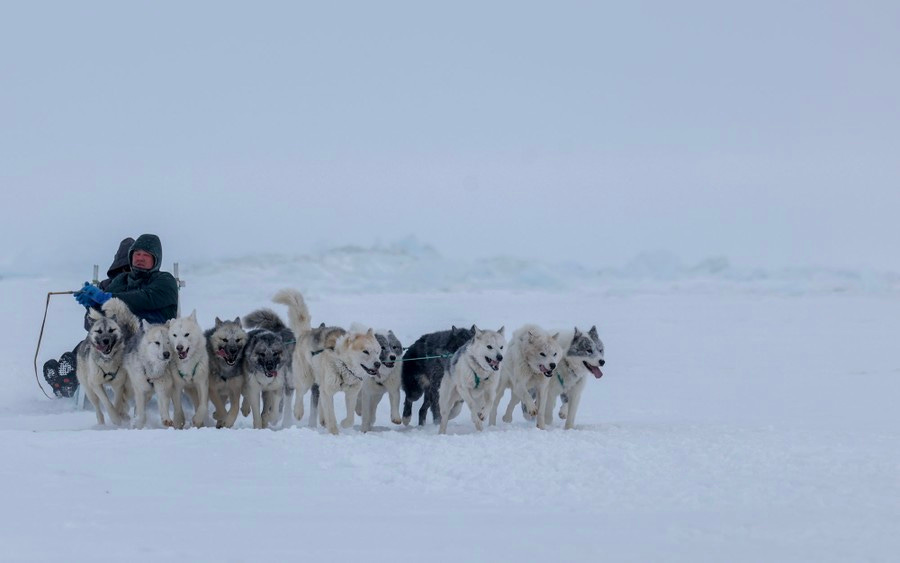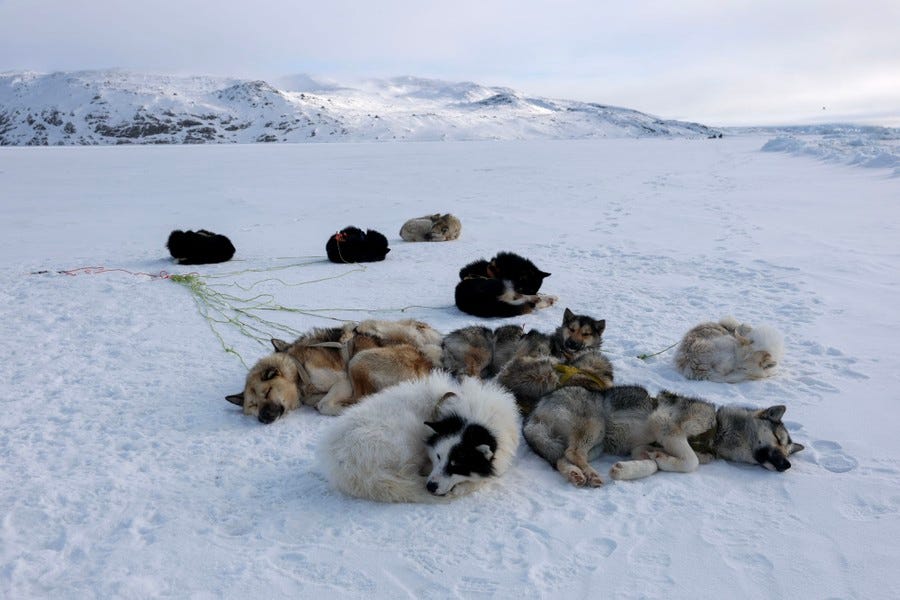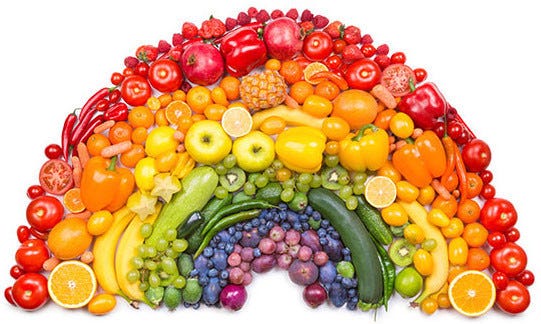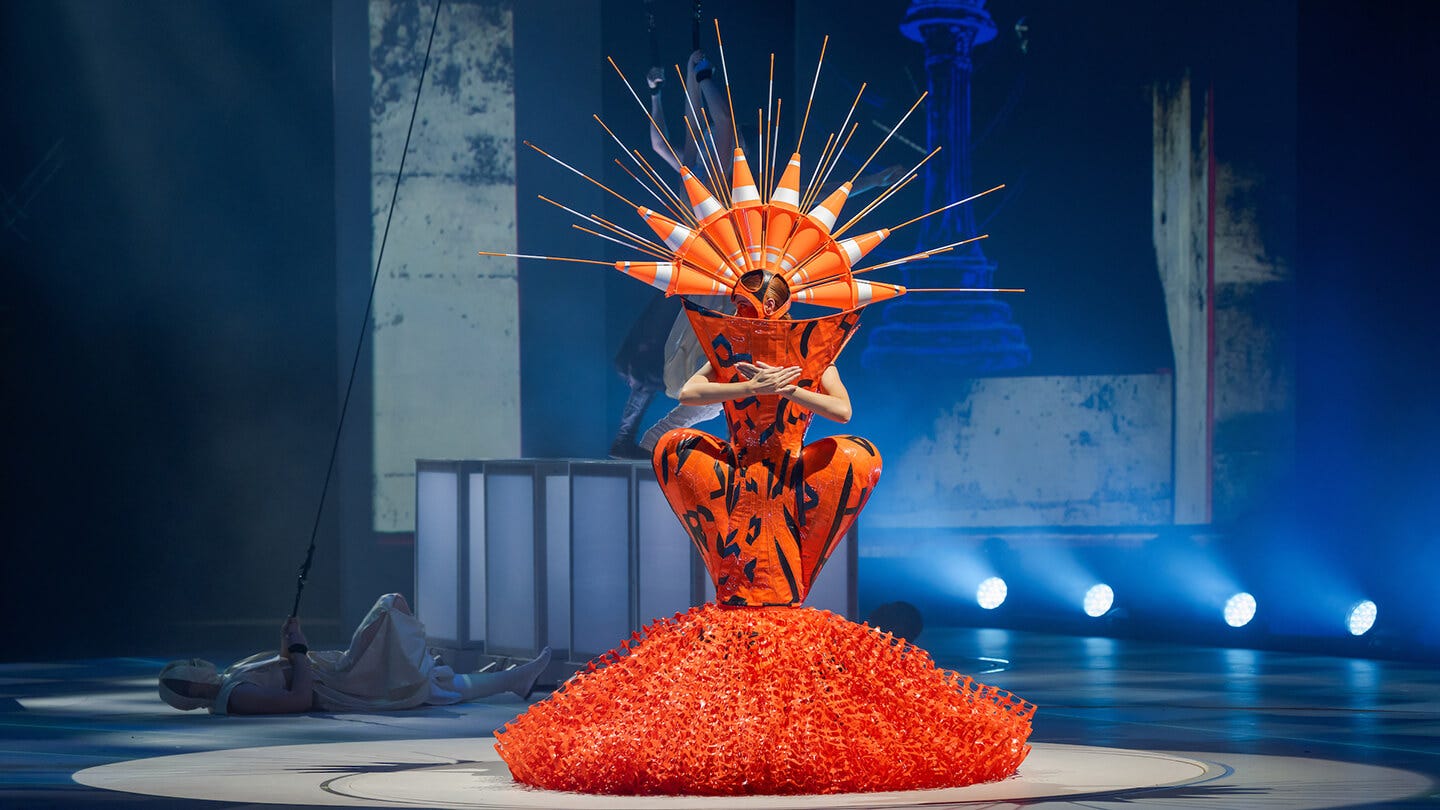Examining a Life of Public Service
Wearable Art, Eating the Rainbow, and Dogs Doing What They Love

A Life of Public Service
Ronald E. Walters thought he would join the priesthood but instead decided on a life of public service. Ronald Walters leads the NCA, National Cemetary Administration.
Walters and his 2,300 colleagues bury more than 140,000 veterans and their family members every year, and they tend to the perpetual memory of nearly 4 million other veterans, from the Revolutionary War to the conflicts in Iraq and Afghanistan, interred in 155 national cemeteries around the United States. It doesn’t matter if you were a seaman recruit who died without any family or a four-star general who lived into your 80s: If you served this country, then the NCA serves you.
The work that Walters does is admirable. But he and his colleagues happen to do it better than any other organization in America. Seven consecutive times, the NCA has received the highest rating of any entity, public or private, in the American Customer Satisfaction Index. Costco gets a respectable 85, Apple 83 but the NCA gets a 97.
Walters believes the NCA owes those it serves a perfect score. “We only get one chance to get it right,” he says. To that end, he has spent the past two decades obsessing over everything from the lifespan of a backhoe to how many days it takes to manufacture and engrave a headstone, working with scientists to determine what chemical best cleans marble, consulting with groundskeepers about the exact number of millimeters a grave settles every year, creating the 40 pages of standards and measures that regulate every national cemetery and then refining those standards annually to make sure that the agency is always improving the services it offers veterans at the time of burial and for all of eternity. He is probably busy refining one of those refinements right now.
Walters was born in the nation’s capital, and he has worked there his whole life. His mother was a federal secretary, first for the State Department and then for Health and Human Services. His father served in the United States Coast Guard.
It is sometimes difficult to know what makes a nation distinctive, to recognize which among our traditions and habits are essential to our collective identity. But repatriating the war dead is the deepest expression of the commitment we make to those who serve this country, an act of loyalty and gratitude that endures beyond the grave. By reuniting fallen warriors with their families and communities, we also bind their memory to our national identity, following rituals that turn each individual loss into something like the legend on a map, showing us the true scale of something we might otherwise never see. “There is no place where the price of freedom is more visible than in a national cemetery,” Ron Walters told the crowd gathered at New Bern earlier this year.
Beautiful and contemplative, these hallowed grounds are designed to stir our moral imagination. They both inspire courage and summon humility, reminding us headstone by headstone of the gravity of sending men and women into harm’s way, hopefully, although not always, on behalf of our highest ideals.
Walters is most proud of an apprenticeship program he started 12 years ago to employ homeless veterans. Men and women chosen to be apprentices are guaranteed a caretaking job if they complete the year-long training in national cemetery duties, learning about grounds, equipment and building maintenance. Their duties include not just landscaping, but also digging graves, placing caskets and aligning headstones. Some graduates have relapsed or stumbled, some have taken their training to private cemeteries closer to their families or support systems, but many continue to work at the national cemeteries where they were first placed. Francisco Zappas, a caretaker at Fort Bliss National Cemetery, served in the Army for 15 years but struggled with the return to civilian life. After a drinking problem ruined his marriage and left his finances in shambles, he was desperate to escape his addiction. The apprentice program was the second chance he needed, and he found meaning in tending to the graves of veterans like himself. He was in the first graduating class of apprentices, and even though he’s 71 now, he still goes to work with the same gratitude and purpose as the very first day he stepped onto the 82-acre cemetery: “Every day, I feel happy to come to work. I’ve probably pruned and cut every bush in this cemetery three or four times now—it looks like a big, beautiful park. We make it look like a shrine, just like the White House.”
Ronald E Walters and Francisco Zappas are federal employees.
Who Is Government?: The Untold Story of Public Service, Michael Lewis

Eating the Rainbow
The vibrant colors of fruits and vegetables aren’t just visually appealing; they are also indicators of abundant protective nutrients. You’ll likely have a healthier diet if you use color as your guide in choosing fruits and vegetables. And while there’s nothing wrong with eating a lot of green vegetables, research has suggested that the wider the variety of natural colors you have on your plate or in your daily diet, the better your nutritional needs will be met.
Fresh produce forms the base of the pyramid of my anti-inflammatory diet. If you follow this eating plan, you’ll get plenty of vegetables – four to five servings per day, both raw and cooked, from all parts of the color spectrum. I also recommend three to four daily servings of fruit, fresh when in season or frozen at other times of the year. When possible, make sure that the fruits and vegetables in your diet are organically grown.
Here’s a rundown on specific food colors and how they benefit your health:
Green: A great source of vitamins (including folate, one of the B vitamins) green vegetables also provide minerals and fiber. Some – including spinach, collards, kale and broccoli – contain lutein and zeaxanthin, compounds from a group of antioxidants known as carotenoids that can protect aging eyes from developing cataracts and macular degeneration. They may also help protect against blockages of the carotid arteries in the neck. Cruciferous vegetables such as broccoli, cabbage, Brussels sprouts, and kale contain antioxidants and other phytonutrients that help reduce cancer risk. Along with bok choy and collard greens they are good sources of the calcium we need for strong bones. You’ll get the most benefits from vegetables by cooking them lightly.
Oranges/Yellows: Sweet potatoes, carrots, mangoes, apricots and other yellow or orange fruits and vegetables are also rich in carotenoids and other antioxidants that protect the body from oxidative stress. Orange fruits and vegetables also give you vitamin C and folate, needed to reduce the risk of heart disease and prevent certain birth defects.
Reds: Tomatoes, watermelon, papaya, and pink grapefruit are among the red pigmented fruits and vegetables that contain lycopene. This powerful antioxidant helps prevent the development of heart disease and some types of cancer, particularly prostate cancer. The lycopene in tomatoes is more available to the body when you cook them, especially in a little olive oil.
Blues/Purples: The deep colors in blueberries, purple grapes, red cabbage, beets, and plums come from anthocyanins, phytocompounds that protect against carcinogens and may help prevent heart disease. Blueberries are especially potent: a half cup provides antioxidant activity equivalent to five servings of peas, carrots, apples, squash or broccoli. Blueberries also give you almost three grams of fiber per half-cup serving.
Whites: Garlic and onions contain allicin, a phytochemical that may help lower cholesterol and blood pressure. Raw garlic is a potent antibiotic that is especially active against fungal infections. It has immune-stimulating properties as well as antibacterial and antiviral effects. Other phytochemicals – polyphenols – found in pears and green grapes, may reduce the risk of some types of cancer.
Dr. Andrew Weil. Chose Foods By Color
From The Onion, a satirical newsletter
Numerous Teams Express Interest In Aaron Rodgers Playing Elsewhere
Serial killer admits he’s lost track of pattern; he was going for originality
World Of Wearable Art Competition
Nelson sculptor Suzie Moncrieff conceived the idea of WoW where she challenged designers to take art off the wall and adorn the body.
2024 Winner of WoW
Winner of Geometric Abstraction
Dogs Doing What They Love


Which distractions in your life have become disguised as priorities?
James Clear
Have a wonder filled weekend.







Thank you for highlighting a federal employee and their department. My husband is a fed employee with the DOD in cybersecurity and on the chopping block. The notion that fed workers have cushy jobs and do nothing everyday is a lie. Sure there are those that don't tow the line as there are in EVERY industry, public or private. The notion that long lines at the always understaffed DMV is going to change by cutting cemetery services or cybersecurity services, that is a sad and incorrect assumption. Lines are only going to get longer and threats to national security are only going to go undefended. It's spring time, I hope everyone stops and smells the roses.